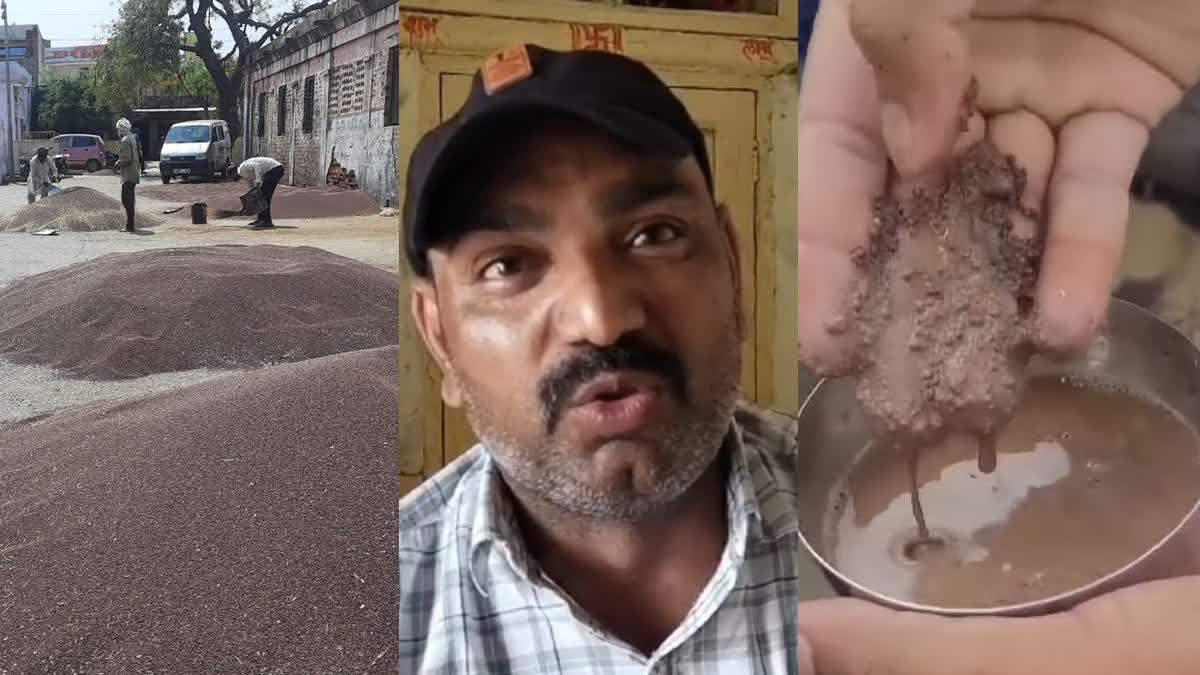Bharatpur (Rajasthan): Amid record mustard production in the country this year, fake mustard being circulated in the markets of Rajasthan is playing the spoilsport for the edible oil crop leaving the the traders worried.
Adulteration in the mustard crop is the talk of the town in Rajasthan as anti-social elements have prepared fake mustard from soil and polish, which is very difficult to identify with naked eye. Cases of fake mustard have been already reported from Vaira area of Bharatpur district and Kaman mandi of Deeg district. The adulteration came to light after traders at a market became doubtful about the quality of mustard. ETV Bharat uncovers the mafia behind the fake mustard, how it is prepared and how can we identify it.
Expert Explains: Mustard trader Bhupendra Goyal, from Bharatpur said that cases of fake mustard have been reported from the mandis of Vaira and Kaman. Over the modus operandi of the fake mustard mafia, Bhupendra said that mustard-sized grains are prepared first from soil using machines. The fake grains thus prepared are then polished with the colour of the mustard seeds which makes them look exactly like real mustard.
How To Distinguish Fake Mustard From Real: Trader Bhupendra Goyal said that when fake mustard reached the markets of Vaira and Kaman, the mustard was put in water to identify it. Being made of soil, fake mustard dissolved easily in water which demonstrated that fake mustard is being prepared from soil. Such cases are also coming to light in other districts of the state as per Bhupendra.
Bhupendra said that completely fake mustard is not reaching the markets, rather some amount of fake mustard is mixed in the real mustard which is not easily caught. When the mustard is lab tested, only then its adulteration can be known, he said. After many incidents, now traders have also become cautious. However, till now no such case has come to light in the mustard market of Bharatpur.
Significantly, Rajasthan has the distinction of introducing the “mustard model farm” project, launched collectively by the Solvent Extractors’ Association of India (SEA) and Solidaridad in 2020-21. First introduced in 400 model farms in five districts of Rajasthan in 2020-21, the project was expanded to Rajasthan and Madhya Pradesh with 500 more model farms in 2021-22.
The SEA in April this year claimed that the production of mustard seeds was likely to touch an all-time high of 12 million tonnes (mt) in the 2023-24 season.



